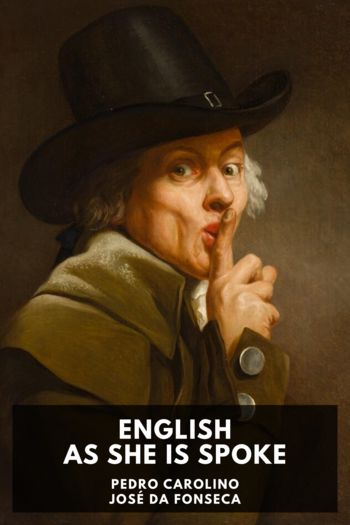Pablo de Segovia, the Spanish Sharper, Francisco de Quevedo [primary phonics .txt] 📗

- Author: Francisco de Quevedo
Book online «Pablo de Segovia, the Spanish Sharper, Francisco de Quevedo [primary phonics .txt] 📗». Author Francisco de Quevedo
The causes of this rank growth of the picaresque element in Spain are to be sought in the national history. The long series of exhausting wars in the Netherlands and in Italy; the discovery and development of America; the monstrous multiplication of monks, priests, and religious houses during the reigns of Philip and of his successor—these three, the chief causes of Spain’s decadence, may be taken to account for the poverty, and the vice, and the bitterness of the struggle for existence, of which the picaresque order, in its extraordinary luxuriance, was the outgrowth. The cutpurses, the beggars, the professional rogues and sharpers, were but the product of the unwholesome working of the organs of life—the remainder ruffianry of that period of diseased energy. The internal corruption, of which they were the signs, was the consequence of the fever which shook the frame and the fury which stirred the blood of Spain during all that period of seeming grandeur but of real disease. The picaro was the adventurer who had missed his chance in the general scramble, who did not or could not go to Flanders or to America, or who, having been, had returned empty. He was the conquistador out of date—the gold-seeker run to seed. How near he was to the failures of the Church—the vagabond friar, the religious mendicant—is clearly seen from this story of Paul the Sharper, as well as from the other tales of the class. The peace of 1609, which secured the independence of Holland and put an end to the long war in the Low Countries, only aggravated the evil condition of Spain, by filling the country with a swarm of needy adventurers and disabled and discharged soldiers, for whom the State made no provision. How fruitful a source of demoralization and misery they were we may learn from all the literature of the period, from Don Quixote downwards. As for America, the reaction of the tide which brought wealth and new life to Spain had set in even before the middle of the sixteenth century. The flood which carried all the men of enterprise and independent spirit to Peru or to Mexico had left Spain drained of her best lifeblood. The sudden influx of gold tended to sharpen the distinction between rich and poor—to make it more difficult for the poor to live, while spoiling them for honesty. The old Castilian simplicity of life was destroyed, and the antique honour, the legacy left by the heroic age which closed with the fall of Granada, corrupted. The new rich introduced luxuries and vices which till then had been alien to the Spanish character. The fortunate adventurers who came back from the New World were as great a terror to public morals through their extravagance and their recklessness, as the unsuccessful through their destitution and despair. The national inclination to the sins of pride, idleness, and boastfulness—how could it happen but that it should be enormously fostered and heightened by the easy conquests in America, following upon the shrinking of the martial power and the prodigious swelling of the ecclesiastical? With nearly ten thousand monasteries and nunneries, and more than thirty thousand monks, of the two orders, Franciscan and Dominican, alone—is it a wonder that the Spain of Philip III should be hastening to decay? The picaro was the fungus which grew out of this mass of corruption. To these running sores was added the expulsion of the Moriscoes under Philip





Comments (0)